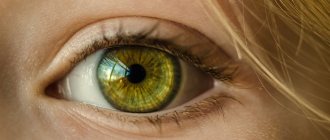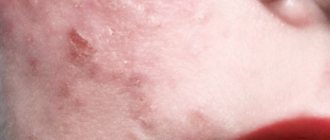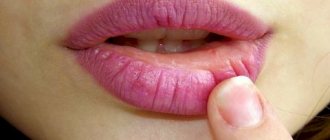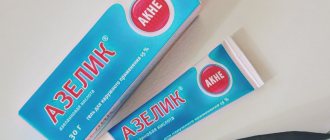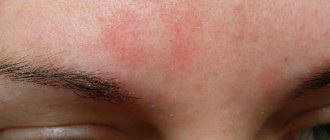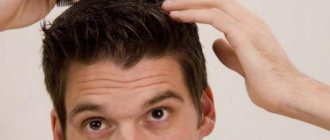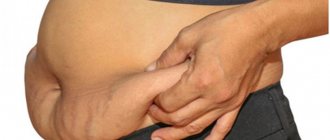Redness and peeling of the skin on the face is evidence of disease or a sign of a functional disorder of individual systems and organs on which the condition of the skin depends. In most cases, these manifestations are accompanied by pain and discomfort, especially if patients experience skin rashes, inflammation, peeling and itching. To eliminate this problem, it is necessary to accurately determine the cause of its occurrence. In most cases, this requires diagnostic measures.
- Symptoms of the disease
- Symptoms
Causes
Redness and peeling of the skin in the area of the nasolabial triangle in children and adults is due to a number of reasons.
They can be represented either by diseases with an independent course or the result of exposure to external or internal factors:
- lack of nutrients in the body;
- temperature changes;
- prolonged exposure to cold and wind;
- using inappropriate skin care products.
It is advisable to consider skin diseases in more detail.
Perioral dermatitis
Perioral dermatitis is a common skin disease that manifests itself as a nodular rash, in most cases localized around the mouth, including the chin area. Sometimes the rashes are concentrated on the forehead, near the nose and eyes. According to statistics, perioral dermatitis is most often diagnosed in women in the age range from 16 to 35 years. Cases of morbidity are also observed in men and children, although with less frequency.
Perioral dermatitis
A rash is the main symptom of perioral dermatitis. It appears in the form of small pink pimples or bumps. Skin rashes can be quite intense or mild, single. The occurrence of pain, as well as burning and itching, is extremely rare with perioral dermatitis.
Causes of the disease
The causes of perioral dermatitis are not fully understood. This topic is still the subject of discussion among doctors regarding factors that can provoke the disease.
The main ones are:
- using creams and ointments containing corticosteroids, such as hydrocortisone or prednisolone ointments;
- the use of certain cosmetics, including foundation;
- adverse external influences: ultraviolet radiation, wind;
- use of oral contraceptives;
- using fluoride toothpaste;
- changes in hormonal levels associated with different periods of a woman’s life: pregnancy, premenstrual period, gynecological diseases.
Dermatitis can be caused by bacteria and fungi present in the hair follicles.
Treatment
Treatment of the disease involves the abolition of steroid drugs, after which patients may experience an exacerbation, characterized by the addition of rashes on the affected areas. After a few days, the rash will begin to disappear. It is mandatory to follow a hypoallergenic diet.
Lotions based on medicinal herbs are also used:
- Decoction of string . 4 tbsp. l. and 0.5 liters of hot water are kept in a water bath for an hour, after which it is kept under a towel for another hour, filtered and cooled. Cotton pads are soaked in the product and applied to the affected areas before heating.
- Infusion of chamomile and calendula. 1 tbsp. l. chamomile and 1 tbsp. l. Brew calendula with 2 cups of boiling water, leave for an hour and strain. Soak gauze folded in several layers or cotton pads in the infusion, then apply to the problem skin. Leave for 15-20 minutes.
Itching and burning are eliminated with the help of antihistamines: Chloropyramine, Mebhydrolin, Citrine, Loratodine. Sometimes, to speed up the relief of the main symptoms, patients are prescribed sedatives.
The second stage of treatment for perioral dermatitis consists of undergoing a course of antibacterial therapy by taking tetracycline antibiotics: Metronidazolone, Doxycycline, Monocycline.
Dry skin in the corners of the mouth: should you worry?
30.09.2021
An uncomfortable feeling on the face caused by dryness in the corners of the mouth - this is called “jamming”. They appear at any time of the year, both in adults and children. They bring discomfort, burning, pain when opening the mouth . Sometimes dry small cracks appear that can bleed. Where do they come from and how to deal with them?
Causes of dry corners of the mouth.
factors contributing to the formation of “jams” , but the main ones are the following:
- staphylococcal infection
- herpes infection caused by the herpes virus
- candidiasis of the oral
- bacterial stomatitis
- adverse weather conditions
- vitamin deficiency, that is, lack of vitamins A, C, B2
- syphilis
- diabetes
- eating spicy, very sour foods, also with regular consumption of sweets
- irritation to toothpaste
- excessive drooling (in children)
It is worth noting that “binges” more often appear in people prone to excessive consumption of sweets. Those who suffer from diabetes periodically experience dryness in the corners of the mouth , as they have high blood sugar levels . In addition, “jams” can appear after a course of treatment with antibiotics or hormonal drugs that can provoke the appearance of fungal and yeast infections in the mucous membrane.
Also, dryness and micro cracks can form after visiting the dentist due to medical procedures or contact of the patient’s skin with gloves. If a white coating appears on the tongue during “seizures,” this indicates that the person is infected with candidiasis and treatment is necessary.
Ways to care for lips with mild forms of “jamming”.
First you need to saturate your body with vitamins A, E, B. To do this, your diet changes. You should eat more nuts, chicken, dairy products, oatmeal, lettuce, and pomegranate. a doctor's prescription, you can take one tablet of the vitamin complex. However, fast carbohydrates should be excluded from the diet (sweet, sour, smoked foods are removed first). These products can provoke the proliferation of bacterial flora on the lips. For the time being, cosmetic procedures in salons are being abandoned. To relieve dryness, lubricate lips with regular Vaseline. You are required to use your own personal hygiene items. It is important to change your toothbrush to a new one.
Medicines.
If bleeding cracks appear, or there are wounds under the formed crust, you need to lubricate them with salicylic acid or treat your lips with hydrogen peroxide. Then apply a solution of iodine or brilliant green to the wounds. You can also use antiviral ointments (Acyclovir, Zyrtec) from a doctor You can also lubricate dry areas with Bepanten. There is no need to take any pills without the advice of a specialist. The first aid for children will be tetracycline ointment, Miramistin solution.
Folk remedies.
At home, you can prepare the following types of remedies to treat “jam”. To make an ointment, you will need to mix a spoonful of honey and a few drops of fish oil. Apply this mixture to the corners of your mouth until it heals. The resulting ointment should be stored in the refrigerator. A mixture of honey, olive oil and aloe juice will also help overcome seizures. The product is prepared in a 1:1 ratio. Gauze is smeared with the solution and applied to the infected area. After lubrication, discard. It is important to use disposable lotions.
Propolis is an undoubted helper for such a disease. It is rich in its healing properties against infectious diseases. Has an anti-inflammatory agent. You need to mix silent propolis with butter. Heat in a water bath. Then strain. You need to lubricate the wounds with this oil for several days. Cracks in the corners of the mouth will begin to disappear. But you should not rely on any folk remedies. It is very important to seek treatment from a doctor . Ointments prepared at home are often suitable as additional care during therapy .
So, an illness in the form of a “jam”, on the one hand, is a common sign of a lack of vitamins. But, at the first symptoms, you need to consult a therapist or dermatologist . Get tested for microflora and find out the reason for their formation. diet, treatment for “jam” will end in 2 weeks.
Published in Articles without category Premium Clinic
Contact dermatitis
The occurrence of contact dermatitis is caused by the body's reaction to a specific irritant. Allergens can include hygiene items (fluoride-containing toothpaste) or household chemicals (soap, washing powder), metal alloys, cosmetics, various skin care products, plant sap, pet hair, and even solar radiation.
Symptoms of the disease
The mechanism of development of dermatitis is due to the delayed hypersensitivity of the human body. The main symptoms of the disease are redness, swelling, irritation and flaking of the skin around the nose and corners of the lips, blisters and cracks in these and other areas of the body, itching, burning and soreness.
Contact dermatitis
In dermatitis, skin lesions appear where the reagent comes into contact with the skin. Severe forms of an allergic reaction are accompanied by a deterioration in general condition, chills, fever, and weakness.
Children are most susceptible to various allergens. Contact dermatitis in a baby can begin with the first artificial complementary feeding, the purchase of a baby vest or a child's toy made of inappropriate material.
The situation in children is complicated by mental instability. Therefore, during illness, the following are added to the main symptoms:
- moodiness;
- tearfulness;
- irritability.
In addition, children may scratch damaged areas of the skin. If this is not prevented, there is a risk of further introducing infection into the body weakened by the disease.
Treatment
Diagnosis of contact dermatitis, which makes it possible to establish the cause of the disease and differentiate it from similar skin manifestations, is carried out through a detailed examination and questioning of the patient, as well as skin tests.
The treatment of this disease is based on the exclusion of the main allergen and irritants that can cause allergies. Isolating the patient from the irritating factor often becomes the main measure to prevent the development of relapses. In this case, there is no need to prescribe drug therapy.
Eliminating the irritating factor often becomes the main measure to prevent the development of relapses.
For contact dermatitis, topical corticosteroids are prescribed. The most effective ointments of this group are: Advantan, Elidel, Lokoid. Hormonal ointments should be applied to clean skin no more than twice a day during a two-week course of treatment. In parallel with this, for some time it is recommended to take antihistamines with a minimum number of side effects in accordance with the accompanying instructions: Erius, Zyrtec, Suprastin, Peritol, Teflast.
For extensive lesions with active inflammation, oral corticosteroids may be prescribed.
It is not recommended to open the blisters that have formed on the skin, as this is fraught with the development of an inflammatory process that requires additional treatment.
Treatment of contact dermatitis with folk remedies is allowed. In order to relieve inflammation and reduce rashes, use:
- Decoction for lotions from burdock roots . Cooking recipe: you need to take 1 tbsp. l. roots, pour 500 ml. boiling water and let it boil for 30 minutes. Apply to affected areas of skin;
- Potato compress . Raw potatoes need to be peeled and grated, after which they can be used as a compress.
Seborrheic dermatitis
Seborrheic dermatitis is characterized by the appearance of dandruff on the scalp and its spread to the area around the nose and mouth. According to statistics, men are most affected by this disease.
The cause of the development of the pathological process is a yeast fungus of the genus Malassezia, which is an opportunistic microorganism present on the epidermis of every person.
Photos with symptoms of seborrheic dermatitis
Under the influence of a number of factors, pathogenic microorganisms multiply, as a result of which the process of skin renewal accelerates and inflammation develops.
The vital activity of the microorganism is associated with the composition of the secretion produced by the sebaceous glands.
Seborrheic dermatitis is an inflammatory disease, the symptoms of which appear in areas of the body with a large number of sebaceous glands. This is the head, the area behind the ears, the nasolabial triangle, the chest and the area between the shoulder blades.
Symptoms
The inflammatory response caused by a fungal infection is accompanied by the destruction of epidermal cells, causing the skin to peel and itch. At the initial stage of seborrheic dermatitis, in certain areas of the skin, yellowish blisters and spots appear, which can form large scaly plaques. In most cases, the affected areas are located symmetrically.
Seborrheic dermatitis is similar to allergies, psoriasis and eczema. Regardless of the severity of the manifestations, its symptoms are identical: first the scalp is affected, then the ears and eyebrows, and only then other parts of the face or body.
In severe and advanced cases, the crusts begin to peel off and the skin becomes very itchy.
There are three forms of seborrheic dermatitis:
- Dry . Secretory secretions are reduced. Teenagers are most often affected by the disease.
- Fat . Characterized by the formation of thick skin secretion.
- Mixed . The pathology is complicated by acne, and both oily and dry plaques are observed on the affected areas.
Treatment
Treatment of seborrheic dermatitis comes down to normalizing metabolic processes in the body, weakening the activity of skin microflora, eliminating psychological discomfort and relieving the main symptoms.
An important component of treatment is a diet that involves limiting fatty, fried, spicy foods, sweets and smoked foods. To facilitate digestion, it is also advisable to take enzymes.
It is possible to cope with the symptoms of seborrheic dermatitis with the help of hormonal medications available in the form of ointments, aerosols and creams. The most common of them are: Akriderm, hydrocortisone ointment, Advantan, Fluorocort. With their help, you can relieve inflammation, itching, eliminate dryness and flaking of the skin, and also moisturize it.
The full course of systemic treatment includes vitamin therapy and the use of drugs with an antimicrobial spectrum of action. These measures can improve the condition of the skin and speed up metabolic processes. Seborrheic dermatitis can be treated at home.
Causes of rough skin
So why can the skin be rough? The epidermis becomes rough due to changes in the hydrolipid film on the surface of the skin. Moisture evaporates very quickly, and its deficiency leads to severe peeling of the skin. The cells gather in clusters and remain on the surface of the skin rather than being removed from it. The scales are noticeable, and the skin in some places becomes rough to the touch. The condition of very dry skin with small scales is called xerosis.
Dry and rough skin can be caused by external factors: red and rough skin on the face, back and shoulders can appear as a result of frequent and prolonged exposure to sunlight, and rough skin on the cheeks and hands as a result of exposure to cold air and wind.
Rough and rough skin on the face and body can also be the result of skin diseases - psoriasis, allergic dermatitis and ichthyosis. Roughness on the skin can also be caused by a genetic predisposition.
